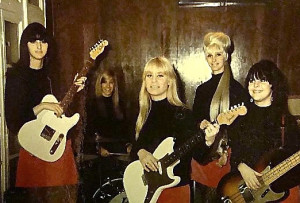 Formed in Grosse Pointe, Michigan, in 1964 by 17-year-old Patti Quatro, The Pleasure Seekers were born of Beatlemania and bred on Detroit muscle. The original lineup included Patti’s younger sister Suzi on bass, Diane Baker on piano, Nancy Ball on drums, and Mary Lou Ball on guitar. Eventually, the band became a true family affair when Arlene Quatro took over as pianist and sister Nancy stepped in as drummer.
Formed in Grosse Pointe, Michigan, in 1964 by 17-year-old Patti Quatro, The Pleasure Seekers were born of Beatlemania and bred on Detroit muscle. The original lineup included Patti’s younger sister Suzi on bass, Diane Baker on piano, Nancy Ball on drums, and Mary Lou Ball on guitar. Eventually, the band became a true family affair when Arlene Quatro took over as pianist and sister Nancy stepped in as drummer.
Within a year of forming, they signed a contract with Hideout Records and released their first single, “Never Thought You’d Leave Me” b/w “What a Way to Die.”
The Quatro girls came from a musical family that encouraged them to follow their rock dreams. Their brother Michael, a Detroit concert promoter, got them bookings in top local clubs and secured them spots as opening acts for up-and-coming artists.
“We started as teenagers,” Patti told Margaret Moser of The Austin Chronicle in 2011. “There were teen clubs like the Hideout everywhere in Michigan. Everybody wanted to have a girl band to bring in the boys to the clubs. We were on the road all the time. The girl bands were such an unusual thing that we got more bookings than Ted [Nugent] and all those Detroit guys. We got out real quick and toured all over.”
T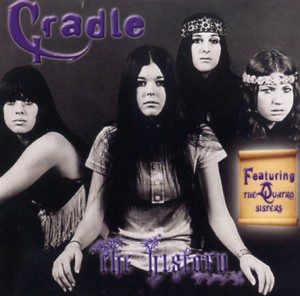 he Pleasure Seekers opened for people like Alice Cooper and Bob Seger, and even jammed with guitar great Jeff Beck, who became a mentor to Patti.
he Pleasure Seekers opened for people like Alice Cooper and Bob Seger, and even jammed with guitar great Jeff Beck, who became a mentor to Patti.
“We were trying to make it through the executives who wanted us to wear lavish costumes, like in Vegas or on The Partridge Family,” Patti told The Chronicle. “Wow the crowd – tits and ass. We weren’t having it. That was always the fight with the executives. They just didn’t know what to do with women. They were scared you’d fall in love and get married.”
In 1968, the Seekers signed with Mercury Records, released a second single, “Light of Love” (which charted), and toured the U.S. They played everything from original material to Beatles tunes to Motown hits, and were one of the first bands to feature light shows in their act.
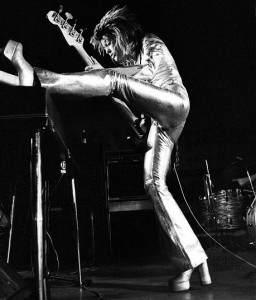 Seeking a harder edge, the band morphed into Cradle in 1969. They performed at pop and rock festivals and even toured Vietnam before disbanding in 1973.
Seeking a harder edge, the band morphed into Cradle in 1969. They performed at pop and rock festivals and even toured Vietnam before disbanding in 1973.
Patti went on to play with the 1970s all-female rock band Fanny for a while, and later managed Cradle Rock Publishing with sister Nancy. She currently runs a tour services company – Starlight Travel – that caters to rock artists and actors.
And then there’s Suzi, the Quatro sister who struck out on her own and put some major dents in the glass ceiling of rock and roll.
It’s a pity that many people remember her primarily for her role in the 1970s sitcom Happy Days – as guitarist Leather Tuscadero, younger sister of Fonzie’s girlfriend. Suzi is the genuine article. Decked out in her trademark leather jumpsuits and platform shoes, this 5-foot firecracker was the first true female singer/guitarist rock star – backed by an all-male band, no less! In 1975, she had the honor of being the first female electric guitarist ever featured on the oh-so-sacred cover of Rolling Stone magazine.
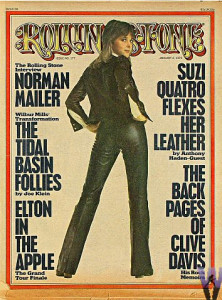 Suzi released a slew of singles that topped the charts in Europe and Australia, and has sold 50 million albums during her career. Although she never really broke big in her native America, she was a major influence on future female guitarists, from The Pretenders’ Chrissie Hynde to The Talking Heads’ Tina Weymouth. She’s acted on the London stage, has appeared in British TV shows like Absolutely Fabulous, and hosted rock and roll programs on BBC Radio. A rocker till the end, she still performs live around the world.
Suzi released a slew of singles that topped the charts in Europe and Australia, and has sold 50 million albums during her career. Although she never really broke big in her native America, she was a major influence on future female guitarists, from The Pretenders’ Chrissie Hynde to The Talking Heads’ Tina Weymouth. She’s acted on the London stage, has appeared in British TV shows like Absolutely Fabulous, and hosted rock and roll programs on BBC Radio. A rocker till the end, she still performs live around the world.
We’ll end with some wise words of advice from Patti Quatro to young women everywhere who seek pleasure as professional musicians: “Develop the thickest hide you can. And rock ’til you drop.”
Here are The Pleasure Seekers singing one of their most popular songs. This was before they ditched the glittery mini-dresses favored by the record label executives.
Here’s the harder-rocking Cradle:
And finally, check out the absolutely fabulous Suzi Quatro, performing her biggest hit “Can the Can” in 1973 with her all-boy backup band!
© Dana Spiardi, May 2, 2014
]]>
Here’s the first in a series of articles showcasing the electric girl groups you’ve probably never heard of.
It could only happen in America: In 1947, a 7-year-old Polish-Jewish girl named Genyusha “Genya” Zelkovicz arrived in New York City’s Lower East Side with her parents and a sister, speaking not a word of English. They were the only ones in their family to survive the Holocaust. Genya’s mother nicknamed her Goldie, and thus began her Americanization.
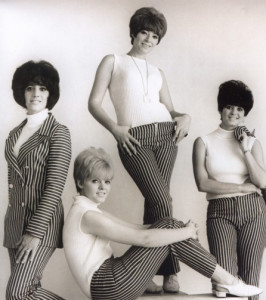 In 1962, she attended a Brooklyn club called The Lollipop Lounge, where, on a dare, she took the stage and sang a song with a group of college kids who called themselves The Escorts. The band’s bass singer (and future ’70s super-producer) Richard Perry liked what he heard and invited her to join the outfit. They found steady work in the New York clubs and enjoyed some regional success with a cover of West Side Story’s “Somewhere.” When Goldie discovered Ginger Bianco playing drums in a Greenwich Village bar, she got the idea to form an all-girl band. They combined their names and became Goldie and the Gingerbreads.
In 1962, she attended a Brooklyn club called The Lollipop Lounge, where, on a dare, she took the stage and sang a song with a group of college kids who called themselves The Escorts. The band’s bass singer (and future ’70s super-producer) Richard Perry liked what he heard and invited her to join the outfit. They found steady work in the New York clubs and enjoyed some regional success with a cover of West Side Story’s “Somewhere.” When Goldie discovered Ginger Bianco playing drums in a Greenwich Village bar, she got the idea to form an all-girl band. They combined their names and became Goldie and the Gingerbreads.
With the addition of pianist Carol O’Grady, the trio toured West Germany and Switzerland with Chubby Checker in 1962. Afterwards, they hired guitarist/vocalist Carol MacDonald, and replaced O’Grady with Margo Lewis. The lineup was complete. Decca Records signed the group in 1963, making them the first female band to land a record deal from a major label. And yes, they had to pose cheesecake-style in glittery garb for publicity purposes.
In 1964, Goldie and girls were hired to provide entertainment at a mod New York party for Warhol discovery Baby Jane Holzer. Guests, including The Rolling Stones and Atlantic Records founder Ahmet Ertegün, were suitably impressed. Ertegün wooed the group from Decca and signed them to Atlantic’s subsidiary label, Atco.
![Goldie and the Gingerbreads on bill with the Rolling Stones. [The Hip Quotient] Screen Shot 2015-08-22 at 3.40.33 PM](http://hipquotient.com/wp-content/uploads/2015/03/Screen-Shot-2015-08-22-at-3.40.33-PM-206x300.jpg) When British Invasion band The Animals caught the Gingerbreads’ act at the The Wagon Wheel club in Times Square, their manager invited them to tour England. Thus began a successful two-year run, as the girls toured non-stop on bills that included The Beatles, The Stones, The Animals, The Kinks, Manfred Mann, The Yardbirds, and The Hollies. (You can just imagine what went on in those tour buses.)
When British Invasion band The Animals caught the Gingerbreads’ act at the The Wagon Wheel club in Times Square, their manager invited them to tour England. Thus began a successful two-year run, as the girls toured non-stop on bills that included The Beatles, The Stones, The Animals, The Kinks, Manfred Mann, The Yardbirds, and The Hollies. (You can just imagine what went on in those tour buses.)
Following in the footsteps of their male British counterparts, they played numerous gigs in West Germany, even appearing at The Beatles’ early haunt, The Star Club in Hamburg. It turns out that Ringo himself was a fan. In 1965 he managed to get them a spot on the popular BBC variety show Not Only….But Also, hosted by Dudley Moore and Peter Cook. They sang the song that should have put them on the map: “Can’t You Hear My Heartbeat.” But the high-profile Herman’s Hermits beat them to the punch, releasing their own hit version of the song two weeks earlier. The Gingerbreads’ release reached #25 in the U.K., but bombed in the U.S.
The band eventually returned to America, but failed to make an impact. Some say Goldie’s overbearing leadership style precipitated their demise. But the girls’ frustration over their inability to sell records likely contributed to their frustration and ultimate breakup in 1968.
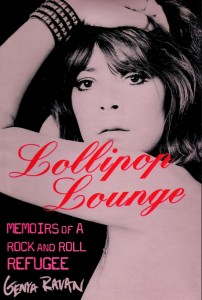 All of the band members stayed active in the music business. Bianco and MacDonald formed the jazz-fusion band Isis. Lewis toured as a keyboardist with Bo Diddley and currently runs her own talent consulting company. But it’s Goldie Zelkovicz who’s managed to carve out a real niche for herself in the rock world. As Genya Ravan she fronted her own jazz-fusion band, Ten Wheel Drive, from 1968 through 1974. She’s appeared on TV talk shows, produced The Dead Boys’ debut LP and a comeback album for Ronnie Spector, served as head of production at CBGB Records, and currently hosts two Sirius/XM radio shows: Goldie’s Garage and Chicks and Broads. Her 2004 memoir Lollipop Lounge: Memoirs of a Rock and Roll Refugee takes the reader on a wild ride – from her prison camp days in Poland to her struggles with alcohol and cancer. Hey Genya, there’s still time to roll a Harley down the halls of a Hyatt!
All of the band members stayed active in the music business. Bianco and MacDonald formed the jazz-fusion band Isis. Lewis toured as a keyboardist with Bo Diddley and currently runs her own talent consulting company. But it’s Goldie Zelkovicz who’s managed to carve out a real niche for herself in the rock world. As Genya Ravan she fronted her own jazz-fusion band, Ten Wheel Drive, from 1968 through 1974. She’s appeared on TV talk shows, produced The Dead Boys’ debut LP and a comeback album for Ronnie Spector, served as head of production at CBGB Records, and currently hosts two Sirius/XM radio shows: Goldie’s Garage and Chicks and Broads. Her 2004 memoir Lollipop Lounge: Memoirs of a Rock and Roll Refugee takes the reader on a wild ride – from her prison camp days in Poland to her struggles with alcohol and cancer. Hey Genya, there’s still time to roll a Harley down the halls of a Hyatt!
So, do Goldie and the Gingerbreads qualify as Rock and Roll Hall of Fame inductees? Based on their limited body of work, probably not. But as the first all-female guitar band, and the first to be signed by a major label…well, why not? (I mean, Kiss got in, after all!) In 2011 the Hall of Fame acknowledged their contributions by including the group in its traveling “Women in Music” exhibit.
Perhaps a more meaningful honor was one bestowed upon them by the Women in Music organization, which presented the first ladies of rock with a Touchstone Award. It’s given annually to women who possess “the courage and inspiration to make a difference in the music industry and whose work has set new standards.” And it’s only fitting that one of the band’s earliest supporters, the legendary Ahmet Ertegün, presented them with their statuettes.
Here are The Gingerbreads on British television, circa 1965:
And here’s the great Genya Ravan, still ravin’, in 2013:
© Dana Spiardi, April 18, 2014
]]>Now, if you’re old enough to get that Bugs-Daffy cartoon reference, you’re no doubt old enough to remember a song that today would be considered a “women’s power” anthem: Nancy Sinatra’s “These Boots are Made for Walkin’, which hit the #1 spot on the Billboard charts in January1966. With it’s slinky guitar strut and finger-pointing tough girl lyrics, it quickly became a favorite among my growing collection of 45s. What a way for a six-year-old to learn the fine art of insult and accusation!
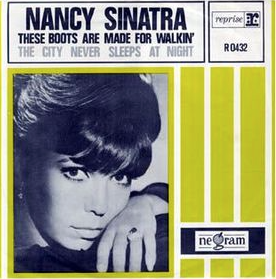 You keep lying, when you oughta be truthin’.
You keep lying, when you oughta be truthin’.
And you keep losin’, when you oughta not bet.
You keep samin’, when you oughta be a-changin’.
Now what’s right is right, but you ain’t been right yet.
These boots are made for walkin’. And that’s just what they’ll do.
One of these days these boots are gonna walk all over you.
As I sat in my room, watching the record player’s needle skate so nicely along the grooves of the little vinyl disc, I wondered: “Would I ever be angry enough at a boy to tell him off like this?” “Would I ever have the occasion to use such interesting language?” All in due time, all in due time.
And would I ever be mature enough to wear boots like the red ones Nancy wore on the cover of the record sleeve? No, I would never reach an adequate level of maturity. But that didn’t stop my fab mom from buying me my first pair of white mini go-gos soon after the song’s release kicked-off a national boot craze. First-graders in go-go boots? Well, it was the swinging ’60s after all. (A year later Mrs. Lore sent me to the principal’s office for wearing lilac-colored fishnet stockings to school. Hey, could I help it if Mommy followed Chrissie Shrimpton and Twiggy?)
 For a few years in the psychedelic ’60s, Nancy Sinatra was as fab as her famous father Frank was considered square by the hippies. She released a string of hit records, appeared in TV shows and starred with Elvis in one of his silly formula movies, “Speedway.” Even the young Material Girl was a Nancy fan. “Nancy Sinatra was a huge influence on me,” said Madonna. “I wanted to put on my go-go boots and walk all over someone.” (And she’s done just THAT, alright!)
For a few years in the psychedelic ’60s, Nancy Sinatra was as fab as her famous father Frank was considered square by the hippies. She released a string of hit records, appeared in TV shows and starred with Elvis in one of his silly formula movies, “Speedway.” Even the young Material Girl was a Nancy fan. “Nancy Sinatra was a huge influence on me,” said Madonna. “I wanted to put on my go-go boots and walk all over someone.” (And she’s done just THAT, alright!)
Nancy’s classic put-down song was written by Lee Hazlewood, who penned many of her hits, produced her records and occasionally sang with her, duet-style. It was recorded using the top studio musicians of the day: legendary “Wrecking Crew” members Hal Blaine on drums; Al Casey, Tommy Tedesco, and Billy Strange on guitars; Ollie Mitchell, Roy Caton and Lew McCreary on horns; and Carol Kaye on electric bass. The defining funky bass line was the work of Chuck Berghofer. “Boots” sold over a million copies and was nominated for three Grammy awards. It’s been covered by Geri Halliwell, Megadeth, Jessica Simpson, Lil’ Kim, Billy Ray Cyrus, Faster Pussycat, and The Supremes.
By the mid-1970s Nancy Sinatra would nearly disappear from the music scene, as singers like Laura Nyro, Joni Mitchell, Carly Simon, and Carole King gained fame for their songwriting skills and earthier material. But she’ll always occupy a special place in my pantheon of girl rockers. Her music entertained me at a time when I was too green for Grace Slick and too cool for Connie Francis. And thanks to her cry-tough song, I’ve spent my life knee-deep in a boot bonanza.
Oh, how I wanted to use “Little Boots” as my nom de plume, but some British poptart had already taken it as her stage name. Maybe it’s just as well. It is, after all, the English translation of Caligula, the nickname of Rome’s most monstrous emperor, Gaius. Oh, we excitable Italians and our footwear!
Here’s Nancy struttin’ her stuff. To me at age 6, this TV clip was the height of groovy. Ooh, I just found me a brand new box of matches!
© Dana Spiardi, Jan 28, 2012 (original publication date)
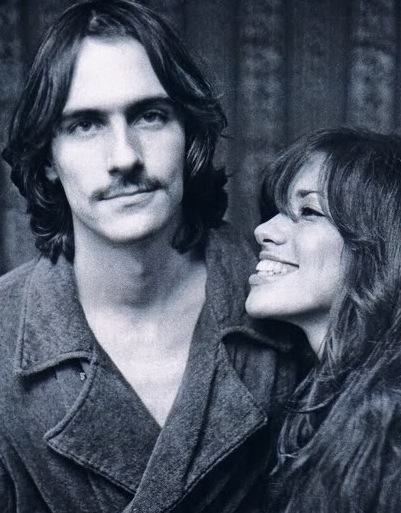 Many were hot for the sexy Simon, but the burning question of her career remains unanswered: just who IS she referring to in her career-defining song, “You’re So Vain,” which topped the charts 42 years ago this month? Carly’s been hounded by this question since the song’s debut, obviously enjoying the enigma she’s created. For decades she’s dropped various, often conflicting clues, but has only revealed the truth to one person. More on this later.
Many were hot for the sexy Simon, but the burning question of her career remains unanswered: just who IS she referring to in her career-defining song, “You’re So Vain,” which topped the charts 42 years ago this month? Carly’s been hounded by this question since the song’s debut, obviously enjoying the enigma she’s created. For decades she’s dropped various, often conflicting clues, but has only revealed the truth to one person. More on this later.
First, let’s eliminate Carly’s husband of 11 years, James Taylor. He’s battled his share of demons, but blatant egomania was never among them. I mean, I really can’t picture him flying a Lear Jet up to Nova Scotia or hanging out with underworld spies.
But now that we’re on the subject of Lear Jet-setters, let’s consider Mick Jagger, who many believe inspired the lyrics. He did sing, uncredited, on “You’re So Vain.” And he and Carly shared similar facial features, which would have appealed to the narcissistic Jagger (he did look fetching in eyeliner at the time). His then-wife, fiery Nicaraguan model Bianca, claimed that the Stones frontman was obsessed with Carly, and said she had the love letters to prove it. Mick Jagger sleeping around on his wife? Surely you jest! But most pop scholars now believe that he was not the sole subject of the song – much to his disappointment, I’m sure.
Early on, Carly maintained that the song was about a composite of three men from her early days in L.A., and mentioned egocentric Hollywood playboy Warren Beatty as one of them. Beatty, whom she dated, has said, “Let’s be honest. That song was about me.” He even called Carly to thank her for the publicity after the record’s release.
(Speaking of Hollywood celebrities, Carly once said that the lyric, your scarf it was apricot, was inspired by Nick Nolte’s cravat. It proves absolutely nothing, but as a clothes junkie I just had to toss that in.)
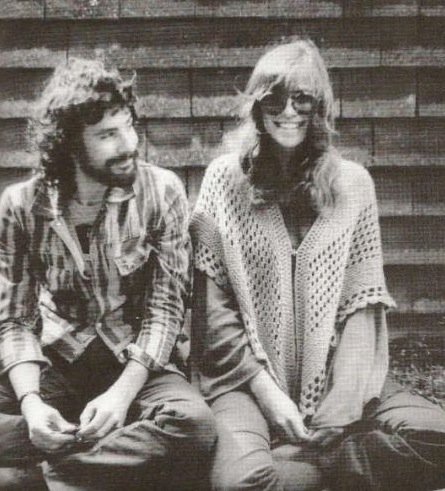 Carly set lyric detectives wild when she later claimed that the subject’s full name contained the letters A, E, and R. Aha! This means the song’s protagonist was not inspired by a trio of men, but was indeed based on a single, self-absorbed individual. This clue would keep Jagger and Beatty in the running, since both full names contain the correct letters.
Carly set lyric detectives wild when she later claimed that the subject’s full name contained the letters A, E, and R. Aha! This means the song’s protagonist was not inspired by a trio of men, but was indeed based on a single, self-absorbed individual. This clue would keep Jagger and Beatty in the running, since both full names contain the correct letters.
In 2003, the clue was reduced from three letters to one. In August of that year, Carly said she’d disclose the name of the man who had one eye in the mirror as he watched himself gavotte to the highest bidder at the Martha’s Vineyard Possible Dreams charity auction. NBC Sports President Dick Ebersol’s top bid of $50,000 made him the winner. As promised, Carly revealed the name to him, with his promise that he’d never divulge the secret. She did, however, allow him to release one clue: that the letter E was in the person’s name.
That left the field wide open once again. Then, in 2010, she teased us with yet another clue when she told Uncut magazine that she was planning to re-record “You’re So Vain.” She said that playing the new recording backwards would reveal the name. “There’s a little whisper — and it’s the answer to the puzzle,” she said. One of her representatives confirmed that the whispered name was “David.”
A number of “Davids” were therefore considered: l’enfant terrible David Crosby, teen idol David Cassidy, media mogul David Geffen, and gender-bending David Bowie, who she didn’t even know back in 1971.
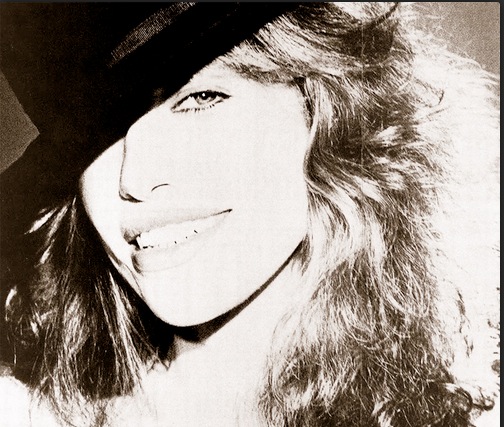
The brash, blustery David Geffen is an obvious choice, since he was head of Carly’s Elecktra record label. Supposedly, she was jealous that Geffen spent more time doting on his other famous client, Joni Mitchell, who wrote “Free Man in Paris” about him. But Carly claims she hadn’t yet met him when she composed the song. And even if she had written it about him, we know it wasn’t based on a love affair; Geffen is gay, his fling with Cher notwithstanding.
Has Carly been playing games with us all along? Was she merely trying to throw us off track with her conflicting clues? Many of those in her inner circle believe they know the true identify of the man who caused Ms. Simon to dream of clouds in her coffee. And that man is Dan Armstrong, a guitarist, session musician and luthier whom she dated for two years prior to the release of the song. According to those who knew him, he was quite vain, once boasting that he was the first and only electric guitar specialist in the world. It’s rumored that Carly carried a torch for him for years after their breakup (you said that we made such a pretty pair, and that you would never leave). And finally, if we are to believe one of her earliest clues, his full name – Daniel Armstrong – does contain the letters A, E and R.
Carly, thanks for providing us with such an entertaining distraction for so many years. On behalf of every woman who’s ever dated a vain, spoiled king-baby, I tip my strategically-dipped hat to you.
Here’s an interesting 2011 video of Carly that features several renditions of “You’re So Vain.” The song was featured on her second studio album, “No Secrets,” released in 1972. Although my reaction to her earliest work was lukewarm, I instantly fell in love with her mystery-man song and rushed out to buy the album. Sure, some of its songs, notably “Embrace Me, You Child” and “It Was so Easy,” are schmaltzy. But, at age 13, I didn’t hear a dud on the entire disc. I played the record till the luster on the vinyl turned dull. In reviewing the LP, Robert Christgau, the self-proclaimed Dean of American Rock Critics, said of her voice: “If a horse could sing in a monotone, the horse would sound like Carly Simon, only a horse wouldn’t rhyme ‘yacht,’ ‘apricot,’ and ‘gavotte.’ Is that some kind of joke? Why did Mick Jagger want her? Why does James Taylor want her? Come to think of it, why does she want either of them?” That’s a bit harsh, isn’t it?
© Dana Spiardi, Jan 7, 2014
]]>